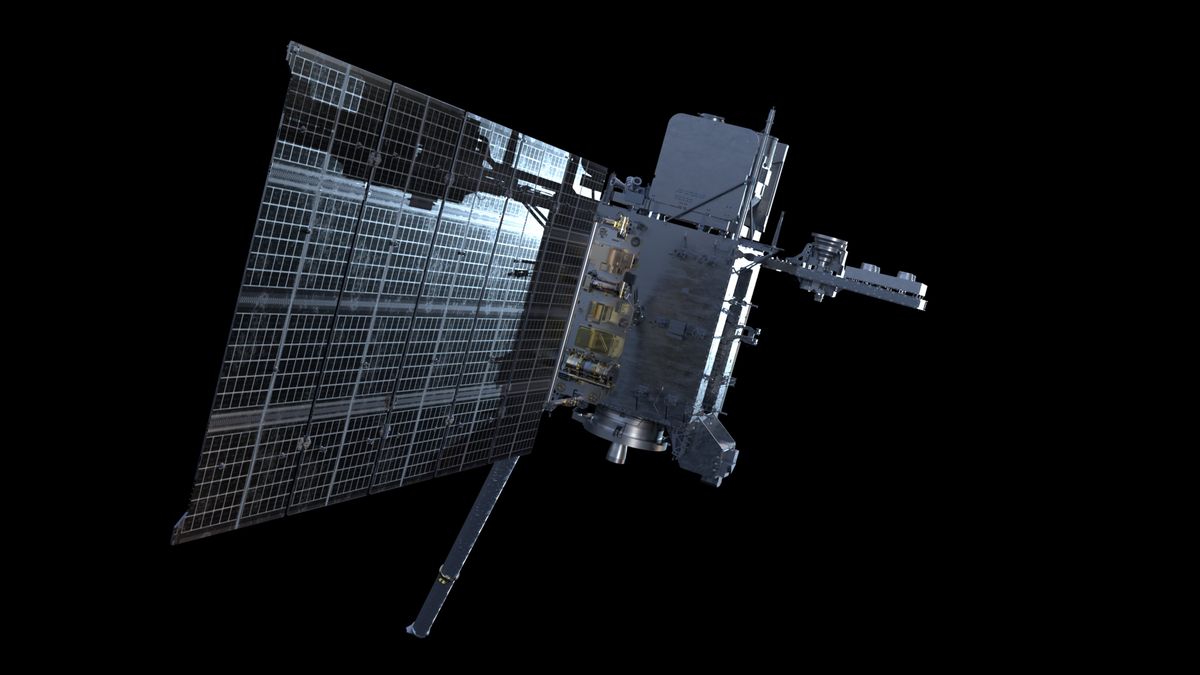CAPE CANAVERAL, Fla. – The green lights continue to shine ahead of the launch of a powerful U.S. weather satellite.
GOES-Uthe fourth and final member of the U.S. National Oceanic and Atmospheric Administration (NOAA) GOES-R series of next-generation weather systems satelliteshas been approved for its planned launch on Tuesday (June 25), following an in-depth readiness review on Monday (June 24).
The two-hour launch window for GOES-U begins Tuesday at 5:16 PM EDT (2116 GMT). The spacecraft will take a ride on a SpaceX Falcon heavy rocket from launch complex 39A NASA’s Kennedy Space Center here on the Space Coast, weather permitting. This will be Falcon Heavy’s 10th launch overall, and 2024’s 65th orbital launch for SpaceX.
Late Monday afternoon (June 24), members of the mission and launch operations teams briefed the media on the final checklist items for Tuesday’s launch.
“The GOES-U spacecraft is ready, the launch vehicle is ready and we look forward to getting the spacecraft into orbit,” said Denton Gibson, senior mission manager at NASA’s Launch Services Program, during a press conference on Monday.
Getting everything ready took some work. For example, on Sunday evening (June 23), while preparing for the rollout of GOES-U and the Falcon Heavy on Monday, the launch team discovered a problem with the transport air conditioning (AC) system.
“The system has redundant parallel systems and one of those legs was not working,” Julianna Schiman, director of NASA science missions at SpaceX, said during Monday’s briefing. “We decided to keep the vehicle safe and ensure that the transport air conditioning unit was fully functional. Now that transport unit is fully functional and provides very cold air.”
But this is Florida. So even if all systems go, a big question remains: Will Mother Nature cooperate?
“We go with a 70% chance of violation, or a 30% chance of ‘go’ for all weather rules we evaluate,” Brian Cizek, launch weather officer at the US Space Force‘s 45th Weather Squadron, said during Monday’s briefing.
There is a set of 10 weather rulesor criteria that must be met for the launch to proceed. Typical of Florida, there are concerns that thunderstorms could develop in the afternoon, or clouds could build up that could cause the Falcon Heavy to create its own lightning during launch. That would be a dangerous situation.
“What’s interesting is that a rocket ship can actually cause a lightning strike that would not otherwise have occurred [otherwise] An explosion is happening,” Cizek told Space.com. “Certain types of clouds at certain levels of the atmosphere can actually hold a charge that is not strong enough for a natural strike, but can still cause a lightning strike. So that’s what these rules are supposed to protect against.”
However, the two-hour launch gives the team a realistic chance of getting off the ground.
“Even if you violate part of the window, we can shift things as the weather looks better,” Cizek said. “So if things look worse at the beginning of the window, we may shift toward the middle or end of the window as we see the storms start to die down. I think there will be an opportunity, and we will work closely with our launch weather team.”
Like its satellite siblings, GOES-U will have a wealth of scientific bells and whistles. The new spacecraft’s instruments will deliver state-of-the-art advanced images. It will also study Earth’s weather, oceans and environment in detail, including mapping lightning activity in real time. GOES-U’s science equipment includes updates and improvements over its predecessors’ instruments, and includes a brand new compact coronagraph tool to help with space again predictions.
You can watch the launch live here on Space.com, courtesy of NASA. Coverage will begin no earlier than 3:00 PM EDT (7:00 PM GMT).
The successor to NOAA’s GOES-R series will be the Geostationary Extended Observations (GeoXO) satellite system, scheduled to launch in early 2030.
